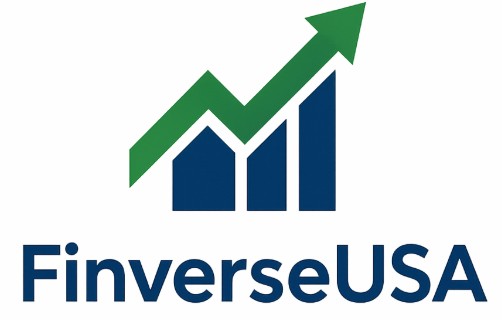
Homing in on the right home insurance can be like looking for a needle in a haystack. So how can you tell which of the hundreds of firms claiming superior coverage at the lowest prices actually stand behind that promise? We sifted through customer reviews, claim satisfaction, financial strength and coverage options for dozens of insurers in order to bring you the best home insurance companies of 2025.
If you’re a first-time homebuyer or are shopping around for a new provider, read on to make your decision an educated one that protects both your property and your wallet.
Top 10 Homeowners Insurance Companies for 2025
1. State Farm – The Big, Dependable Choice
State Farm remains the big player in the home insurance market, and for good reason. Having more than 19% of the market, their reputation is built on reliable service and broad coverage choices.
Why State Farm Ranks #1:
- Great customer service with 24/7 claim filing
- Wide range of discounts available
- Excellent financial strength (A++ by A.M. Best)
- Local agents in every state
Highlights of coverage: State Farm provides basic homeowners policies along with specialty coverage for high-value homes, condos and renters. The latter includes coverage for identity restoration, business property in the home for home-based businesses, child care expenses and extra costs for living elsewhere if you cannot live in your home following a covered loss.
- Average Annual Premium: $1,200 – $1,800
- Best For: Homeowners who like to have local agents and are looking for simple, straightforward coverage.
2. USAA – Favorite Among Military Families
USAA always scores high with its members, but only military families and veterans are eligible to join. They offer great customer service, as well as some of the best rates in the country for people who qualify.
Key Advantages:
- Outstanding customer satisfaction scores
- Competitive pricing for military families
- Simplified claims process
- Extra benefits such as inflation guard coverage
Coverage Options: USAA offers all the traditional homeowners insurance coverages, as well as replacement cost coverage, extended dwelling coverage and specialized military deployment coverage benefits that many other insurers do not provide.
- Average Annual Premium: $1,000 to $1,500
- Who’s This Best For: Service members, veterans, and their families looking for top service and some of the most competitive rates around.
3. Amica Mutual – Excellent Customer Service
Amica Mutual is a tradition-rich carrier which offers great protection and a record of high quality service and dependability.
Standout Features:
- Industry-leading customer satisfaction ratings
- No deductible for glass claims
- Accident forgiveness programs
- Generous coverage limits
Special features: Amica’s personalized service, which brings a dedicated claim representative alongside a promise to resolve claims fairly and quickly. They all have unique features, such as ordinance and law upgrades.
- Average Annual Premium: $1,300 – $1,900
- Who Should Get It: Homeowners who want the best customer service and don’t mind paying a little more for better coverage.
4. Liberty Mutual – Flexibility in Coverage Choices
Liberty Mutual home insurance offers flexible coverage options with innovative features.
Notable Benefits:
- New home replacement cost coverage
- 24 hour claims and customer service
- Multiple discount opportunities
- Flexible payment options
Coverage Innovations: Their “Better Car Replacement” coverage and “New for Old” coverage add-ons boost your protection beyond traditional policies. They also provide environmentally friendly home rebuilding opportunities for ecologically-minded homeowners.
- Average Annual Premium: $1,100 – $1,700
- Best For: Homeowners looking for unique coverage features and policy flexibility.
5. Travelers – Strong Financial Backing
That kind of financial backing meshed with wide-ranging coverage choices means Travelers is a good match for many homeowners nationwide.
Key Strengths:
- Excellent financial stability ratings
- Wide variety of coverage options
- Professional claims handling
- Disaster preparedness resources
Special Features: Travelers has special coverage options including identity theft, home cyber protection, and coverage of costly items such as artwork and jewelry. Their “IntelliDrive” program can also offer discounts for good driving behavior.
- Average Annual Premium: $1,250 – $1,750
- Best For: People who prefer an all-inclusive policy from a financially stable company.
Mid-Tier Performers Worth Considering
Allstate
With its national name recognition and network of agents, Allstate is easily accessible, but its customer satisfaction scores are average at best.
Pros:
- Extensive agent network
- Multiple discount programs
- Claim satisfaction guarantee
- Good bundling opportunities
Areas for Improvement: There are some reports that customers have experienced increased claim processing times, and rates that went up above average.
- Annual Average Premium: $1,200 – $1,800
Farmers Insurance – Regional Strength
Farmers does well in some places, particularly in California and the Southwest, where it offers competitive rates and decent customer service.
Strengths:
- Competitive pricing in select markets
- Good coverage for natural disasters
- Flexible policy options
- Local agent support
- Average Annual Premium: $1,150 — $1,650
Nationwide – Solid Middle Ground
Nationwide provides dependable coverage with standard customer satisfaction scores, and is priced competitively in most locations.
Notable Features:
- On Your Side claims service
- Brand new belongings coverage
- Multiple discount opportunities
- Good financial strength ratings
- Average Yearly Premium: $1,100 – $1,600
Specialized Options for Unique Needs
Chubb – Luxury Home Specialist
Chubb offers unique coverage not found with standard insurers for high-value homes and luxury properties.
Luxury Features:
- Agreed value coverage for homes
- Non-depreciating personal property claims
- Worldwide coverage for personal belongings
- Concierge claim service
- Average Annual Premium: $2,500 – $8,000+
- Best For: People who own a high-value home and want the best coverage and service
Lemonade – The Digital Disruptor
Lemonade combines technology and transparency in home insurance, targeting tech-savvy homeowners who want digital-first experiences.
Tech Advantages:
- AI-powered claims processing
- Transparent pricing model
- Mobile-first experience
- Quick policy setup
- Average Annual Premium: $800 – $1,400
- Best For: Tech-savvy homeowners who are fine with digital-only service.

What to Look for in a Home Insurance Provider
Financial Stability Matters
The financial security of a company is crucial to its ability to pay claims and other benefits when policyholders suffer losses. Seek out insurers with A.M. Best ratings of A- or higher. Some of the best financial-rated companies are:
| Carrier | A.M. Best Rating | Financial Strength |
|---|---|---|
| State Farm | A++ | Superior |
| USAA | A++ | Superior |
| Amica | A+ | Superior |
| Travelers | A++ | Superior |
| Chubb | A++ | Superior |
Customer Service Excellence
Good customer service is especially important when you have to file a claim. The best insurers offer:
- 24/7 claim reporting
- Dedicated claim representatives
- Handy mobile apps to manage your policy on the go
- Quick claim resolution times
- Fair settlement practices
Coverage Options and Flexibility
The best insurance companies offer plenty of policy options:
- Dwelling protection
- Personal property coverage
- Liability protection
- Additional living expenses
- Optional coverage for valuable items
Money-Saving Tips for Home Insurance
Bundle Your Policies
Most insurance companies offer substantial discounts for customers who have home and auto policies with the same provider, which could mean hundreds of dollars’ worth of savings each year. You can expect average savings anywhere from 10% to 25% on the two policies.
Increase Your Deductible
You might lower your premium by 10% to 15% by raising your deductible from $500 to $1,000. Just be sure you can afford the higher out-of-pocket cost should you need to file a claim.
Home Security Discounts
You can get a 5% to 20% break by installing security systems, smoke detectors and burglar alarms. Some insurance companies also provide extra discounts because of smart home devices.
Maintain Good Credit
In most states, your credit score has a large effect on your home insurance rates. Good credit by itself can save you hundreds per year.
Shop Around Regularly
Rates can vary widely from one insurer to the next, and they may rise and fall frequently, so regularly shopping around to get rate quotes from multiple insurers every couple of years makes sense. Rate increases at your current insurer may not represent the market at large.
Red Flags to Avoid
Unrealistically Low Quotes
If it looks too good, it probably is. Some of the features that tend to accompany very low premiums are:
- High deductibles
- Limited coverage
- Poor customer service
- Weak financial ratings
Poor Customer Reviews
Shop around for an insurer by checking customer satisfaction ratings and complaint ratios before making a decision. If a company has very poor reviews, there may be systemic problems with claims-handling or customer service.
Limited Coverage Options
If insurers only offer minimalist policies, they might not serve you as well as your life changes. Seek out companies offering a variety of options and customization for your policy.
Selecting the Perfect Provider for You
Assess Your Coverage Needs
Consider the value of your home, the value of your belongings, and risk of being accountable for liability. High-value homes require more robust coverage, while price-sensitive homeowners may focus on competitive pricing.
Compare More Than Just Price
Cost matters, but it shouldn’t be your only consideration. Factor in:
- Customer service quality
- Claims satisfaction ratings
- Coverage options
- Financial stability
- Local agent availability
Get Multiple Quotes
Ask for quotes from a minimum of three to five insurers. Make sure you’re comparing the same coverage limits and deductibles to get an accurate comparison.
Read the Fine Print
Policy details matter. Look at coverage exclusions, deductible tiers, and how a claim is filed when you are making your final decision.
The Future of Home Insurance
Technology Integration
Technological advancement has affected the insurance sector, which has yet to maximize technology. Expect to see more:
- Smart home device integrations
- AI-powered claims processing
- Drone inspections for damage assessment
- Usage-based insurance models
Climate Change Adaptations
As extreme weather becomes more common, insurers are adapting in these ways:
- Updating risk models
- Offering new coverage options
- Investing in disaster prevention programs
- Adjusting pricing in high-risk areas
Making Your Final Decision
Finding a home insurance company to insure your home depends on factors like your budget and the level of coverage you want — as well as companies’ reputations for quality of service. The top five received stellar scores not only for price, but also for customer satisfaction, coverage options and ease of claims handling.
Keep in mind that the “best” insurance provider depends on an individual’s circumstances. A technology-savvy millennial may like Lemonade’s online approach, and someone with a high-value home may think that Chubb’s specialized coverage is worth the premium.
It’s essential to shop around for the best quotes and weigh the coverage options against one another. Don’t just look at the bottom line – consider the whole value package of customer service, financial stability and coverage appropriateness.
Your home is probably the biggest purchase you have made or will make, so quality insurance is vital. Use this guide as your beginning and confirm rates and coverages with providers directly before making a purchase decision.
Frequently Asked Questions
How much home insurance should I get?
Your dwelling coverage should be based on the cost to rebuild your home, not its resale price. Most experts advise that you should have a policy guaranteeing at least 80% of a house’s replacement costs, but 100% is better protection. The standard is 50% to 75% of your dwelling coverage for personal property coverage.
What sets replacement cost and actual cash value coverage apart?
Replacement cost coverage will pay to replace or repair things after a covered loss with new items of similar quality, while actual cash value coverage takes depreciation into account. Replacement cost coverage is more expensive but offers superior protection on your belongings.
How do I get cheap house insurance?
There are several ways to lower your rates: raise your deductible, bundle with auto, install security systems, keep good credit, don’t report small claims and shop around every two to three years. Many providers also extend discounts for not filing a claim, loyalty, or the age of your home systems.
When do I need to update my home insurance?
Review annually, and update when you make home improvements, buy high-value items or undergo life changes, such as marriage or retirement. But also think about updating coverage if replacement costs in your area have skyrocketed.
What is not covered under home insurance?
Conventional homeowners insurance policies don’t cover floods, earthquakes, sewer backups, normal wear and tear, pest infestations or business activities. You might need to insure against these risks with separate policies or endorsements.
What is the process for settling your home insurance claim?
Basic claims may take a couple days to settle, whereas extensive damage can take weeks or even months. The most thorough insurers offer frequent updates and even a dedicated representative to help you through the process.
Do I go through an insurance agent or purchase directly from the company?
Both options have advantages. Agents offer personalized service and can guide you toward the best coverage options, but purchasing direct can mean lower prices and 24/7 online access. Factor in your comfort with insurance jargon and your desire for a personal touch.

